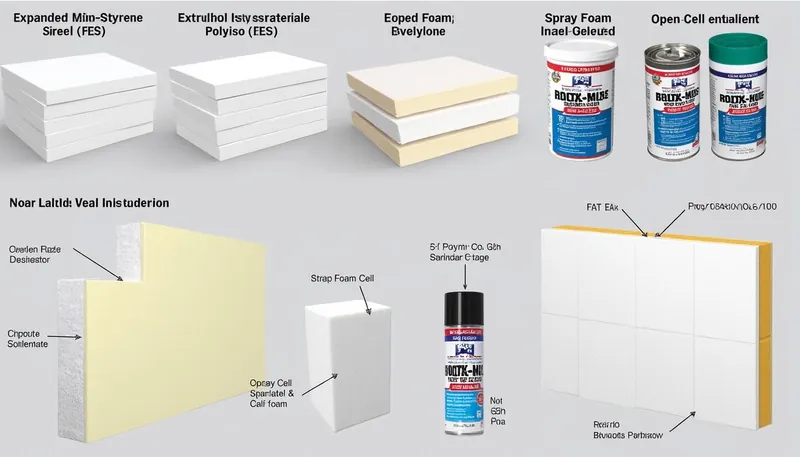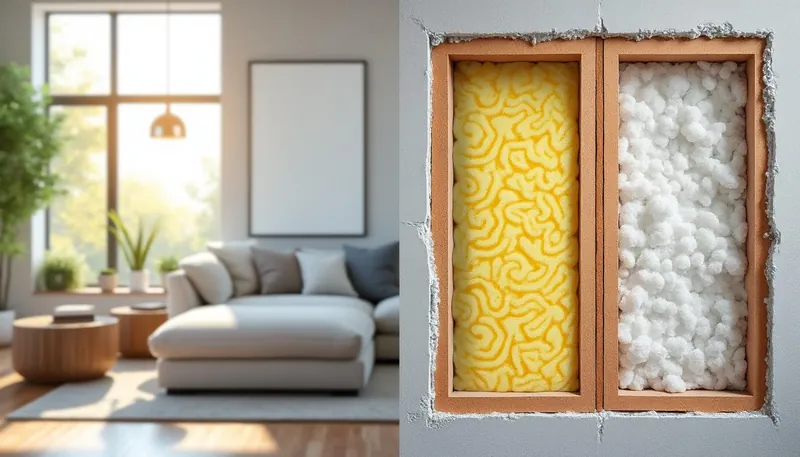In the UK, having a well-insulated home is more essential than ever, especially given the fluctuating weather and rising energy costs. Foam insulation has become a popular choice thanks to its effectiveness, versatility, and ease of installation. From lofts to walls, foam insulation plays a vital role in enhancing the thermal efficiency of a house. As we delve into the different types of foam insulation available, it’s important to understand how each material works, its unique properties, and the best applications for each one.
In this article, we will explore the various types of foam insulation commonly used in the UK—highlighting their characteristics, benefits, and installation processes. We’ll discuss the most widely recognized brands, including Kingspan, Celotex, Recticel, and others, providing insights to help homeowners make informed decisions regarding their insulation needs.
Key Takeaways:
- Understanding foam insulation is crucial for energy efficiency. 🔋
- Major types include spray foam, rigid foam boards, and more. 🏠
- Brands like Kingspan and Celotex are leaders in the market. 🌟
- Proper insulation can lead to significant savings on energy bills. 💰
- Installation methods vary and should be handled with care. ⚒️
The Basics of Foam Insulation
Foam insulation works by resisting heat transfer, helping maintain comfortable indoor temperatures while reducing energy consumption. To fully appreciate foam insulation, it’s essential to grasp the concept of heat transfer, which occurs mainly through conduction, convection, and radiation.
Conduction refers to heat passing through solid materials, convection describes heat transfer through moving air or fluid, and radiation involves heat being emitted as electromagnetic waves. Foam insulation is designed to minimize these processes, making it an effective solution for energy efficiency.
Moreover, insulation performance is commonly measured by its R-value, which indicates its thermal resistance. Generally, a higher R-value signifies better insulation. Conversely, U-values measure heat loss, with lower U-values being more desirable for maintaining warmth in a home. Different types of foam insulation have varying R-values and U-values, making it essential to choose the right type for your particular application.
| Type of Foam Insulation | Typical R-value | Applications |
|---|---|---|
| Open-Cell Spray Foam | 3.6 to 3.9 per inch | Wall cavities, lofts |
| Closed-Cell Spray Foam | 5.0 to 6.5 per inch | Lofts, walls, basements |
| Rigid Foam Board | 5.0 to 6.5 per inch | Exterior walls, roofs, foundations |

Common Types of Foam Insulation
When it comes to foam insulation, there are three main types to consider: spray foam, rigid foam board, and expanded polystyrene (EPS). Here’s a closer look at each type and its unique characteristics.
1. Spray Foam Insulation
Spray foam insulation has gained immense popularity in recent years due to its versatility and effectiveness. It comes in two main forms: open-cell and closed-cell spray foam. Open-cell foam is lightweight and expands upon application, filling gaps and creating an airtight seal. 🔒 On the other hand, closed-cell foam is denser and provides superior thermal resistance, making it ideal for applications where space is limited.
In essence, spray foam insulation can significantly reduce air leaks, thus making your home more energy-efficient. For example, researchers have shown that homes insulated with spray foam can experience energy savings of up to 30%. 🏡 However, installation needs to be executed carefully to avoid moisture buildup, which could lead to mold issues later on.
2. Rigid Foam Board Insulation
Rigid foam board insulation consists of solid panels made from materials such as polyisocyanurate (PIR) or expanded polystyrene (EPS). These boards provide long-lasting thermal resistance and can be used in various applications, including walls, roofs, and foundations. What sets rigid foam apart is its high R-value in a relatively thin profile, making it a favorite for energy-conscious homeowners. 🔄
Brands like Kingspan, Celotex, and Recticel produce rigid foam insulation boards that are commonly used across the UK. Rigid foam boards are excellent for insulating attics, exterior walls, and floors, allowing for improved energy efficiency without sacrificing valuable space.
3. Expanded Polystyrene (EPS)
EPS is another type of foam insulation worth mentioning. Typically less expensive than other options, it provides moderate thermal resistance and is lightweight, making it easy to handle during installation. While it may not have the same R-value as closed-cell spray foam or rigid foam boards, it still offers a cost-effective insulation solution for many homes.
EPS is often used for applications such as wall sheathing and under concrete slabs, offering a reliable insulation option for budget-conscious homeowners. 🤑
| Foam Insulation Type | Pros | Cons |
|---|---|---|
| Spray Foam | Excellent air sealing, high R-value | More expensive, requires professional installation |
| Rigid Foam Board | High thermal resistance, versatile use | Can be costly, not as flexible as spray foam |
| Expanded Polystyrene (EPS) | Cost-effective, lightweight | Lower R-value compared to others |

Installation Techniques for Foam Insulation
Installing foam insulation may seem daunting, but understanding the various methods can simplify the process. The installation technique often depends on the type of foam being used and the application. Here are some common installation practices:
Spray Foam Installation
For spray foam insulation, professional installers typically use specialized equipment to apply the foam evenly. This method involves mixing two components before spraying, allowing the foam to expand and fill gaps effectively. Homeowners should be cautious about attempting DIY spray foam installations as improper application can lead to inadequate insulation and potential moisture issues.
Rigid Foam Board Installation
Rigid foam board insulation is generally easier to install and can be done as a DIY project for those with some experience. It’s typically cut to fit snugly between studs or joists and secured with adhesive or mechanical fasteners. If used on exterior walls, a water-resistant barrier may be required to protect the boards from moisture and weather exposure. ✅
Expanded Polystyrene Installation
Installing EPS is similar to rigid foam board. It can be fitted between framing members, and adhesives can be employed to bond the panels in place. For flooring applications, EPS is often used under concrete slabs, providing good insulation while being cost-effective.
| Installation Type | Recommended Tools | Level of Difficulty |
|---|---|---|
| Spray Foam | Professional spraying equipment | High |
| Rigid Foam Board | Utility knife, adhesive, fasteners | Moderate |
| Expanded Polystyrene (EPS) | Utility knife, adhesive | Moderate |
Choosing the Right Foam Insulation for Your Home
Making an informed decision about foam insulation requires considering several factors. Here are some essential elements to keep in mind:
- Purpose: Identify which areas of your home need insulation (walls, lofts, floors). 🏠
- Budget: Different insulation types vary in cost. Determine your budget before choosing. 💰
- Energy Efficiency Goals: Assess your energy-saving objectives and choose insulation accordingly.
- Professional Advice: Don’t hesitate to consult with insulation experts for recommendations tailored to your needs. 🔍
Additionally, always check product specifications, R-value ratings, and U-values to see how they align with your insulation goals. By carefully considering these factors, you can achieve optimal energy efficiency and comfort in your home.
| Consideration | Insight |
|---|---|
| Area to Insulate | Different insulation types suit various areas of your home. |
| Installation Method | Understand whether you need professional installation or can do it yourself. |
| Environmental Impact | Check for sustainable insulation options to reduce your carbon footprint. |
What is the best type of foam insulation for my home?
The best type depends on your specific needs and budget. Common options include spray foam, rigid foam board, and expanded polystyrene.
Can I install foam insulation myself?
Some types, like rigid foam board and expanded polystyrene, can be installed as DIY projects. However, spray foam insulation typically requires professional installation.
How much can insulation save on energy bills?
Proper insulation can typically save between 10% to 30% on energy bills, depending on various factors.
How long do insulation materials last?
Most foam insulation materials can last for several decades if installed properly and maintained.
Are there eco-friendly foam insulation options available?
Yes, many brands offer environmentally friendly foam insulation options, including those made from recycled materials.


